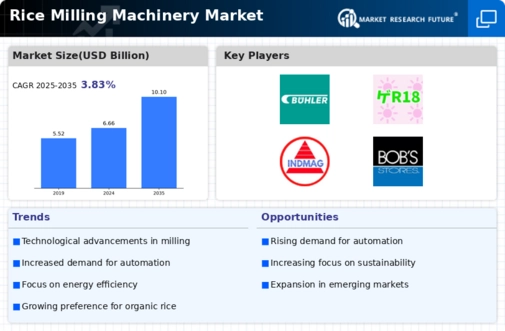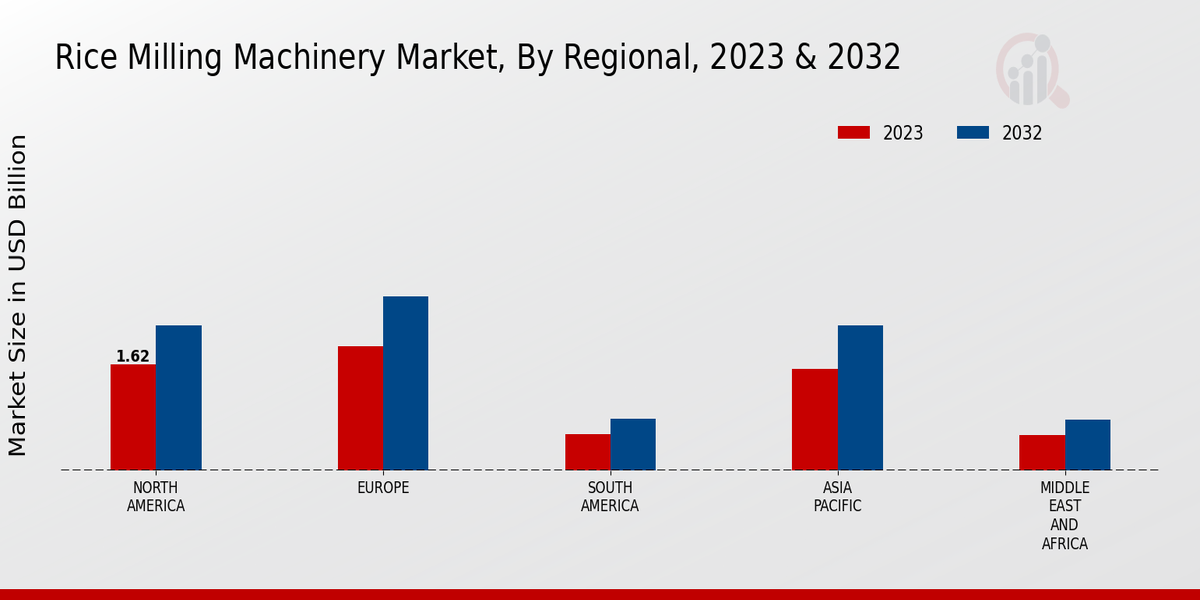Growing Demand for Rice
The Global Rice Milling Machinery Market Industry experiences a robust demand driven by the increasing global consumption of rice. As one of the most widely consumed staple foods, rice production is projected to rise, necessitating efficient milling processes. In 2024, the market is valued at approximately 6.66 USD Billion, reflecting the industry's response to this demand. Countries with high rice consumption, such as China and India, are likely to invest in advanced milling technologies to enhance productivity and quality. This trend indicates a sustained growth trajectory for the rice milling machinery sector, aligning with the global food security agenda.
Market Growth Projections
Technological Advancements
Technological innovations play a pivotal role in shaping the Global Rice Milling Machinery Market Industry. The introduction of automated and semi-automated milling systems enhances efficiency and reduces labor costs. Advanced machinery equipped with digital monitoring systems allows for real-time quality control, which is increasingly essential in competitive markets. As producers seek to optimize their operations, the adoption of these technologies is expected to rise. The market's growth is further supported by the anticipated CAGR of 3.83% from 2025 to 2035, indicating a strong inclination towards modernization in rice milling processes.
Rising Export Opportunities
The Global Rice Milling Machinery Market Industry is bolstered by the increasing opportunities for rice exports. Countries with surplus rice production are exploring international markets, necessitating high-quality milling processes to meet global standards. The demand for premium rice products in regions such as the Middle East and Africa is on the rise, prompting producers to invest in advanced milling technologies. This trend is expected to drive the market's growth as exporters seek to enhance their product quality and competitiveness. The projected market value of 10.1 USD Billion by 2035 underscores the potential for expansion in this sector.
Government Initiatives and Support
Government policies and initiatives significantly influence the Global Rice Milling Machinery Market Industry. Many countries are implementing programs aimed at boosting agricultural productivity, which includes investments in milling technologies. For instance, subsidies for modern milling equipment and training programs for farmers are becoming more common. Such initiatives not only enhance the efficiency of rice production but also contribute to rural development. As governments recognize the importance of rice as a staple food, the support for the milling sector is likely to increase, fostering a conducive environment for market growth.
Sustainability and Eco-Friendly Practices
Sustainability concerns are becoming increasingly relevant in the Global Rice Milling Machinery Market Industry. As environmental awareness grows, there is a shift towards eco-friendly milling practices that minimize waste and energy consumption. Manufacturers are responding by developing machinery that utilizes renewable energy sources and reduces carbon footprints. This trend aligns with global sustainability goals and is likely to attract investments in the sector. The emphasis on sustainable practices not only enhances the market's appeal but also ensures compliance with emerging regulations, thereby fostering long-term growth.






